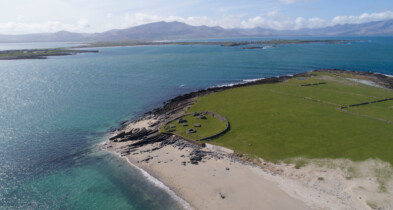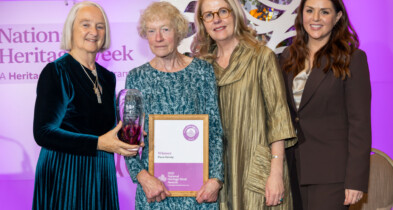
Exploring heritage during COVID-19

The ongoing public health guidelines have been difficult, but they have also provided time to reflect and reconnect with local and global communities. In 2020, National Heritage Week took a new approach – moving away from in-person events and asking organisers to share heritage projects online. While many project organisers found new ways of connecting with and sharing heritage digitally, some focused on the pandemic itself as a historic period in Irish and international history.
As you embark on projects for National Heritage Week 2021, you might like to explore this selection of projects that highlighted COVID-19 as a heritage-creating era in itself.
COVID Time Capsule and Diary: Carlow Library Service
Carlow Councty Council Library Service hoped to capture the living history of the COVID-19 period using a COVID Time Capsule. Children, young people and adults were asked to fill out a form and return it to the County Library and Archives Service where it will be stored in archival boxes and under the correct preservation conditions for the next 25 years.
The Library Service asked for details such as photographs, special memories, pastimes and things to remember. This intergenerational project engaged with local schools and distributed the COVID Diaries through Age Friendly Wellbeing Packs, through Carlow Community Call and to Library users and visitors. More...
Keeping connected during Covid-19 by virtual communication: Louisburgh-Killeen Heritage
Since the lockdown in March 2020 began, Des Grealis of Louisburgh, Co. Mayo has gathered together not just the local community, but also a global audience by way of a weekly Facebook TV, and later YouTube, channel. Showcasing local skills, talent and interesting pastimes of old, the weekly shows have showcased the local area and reached family and friends all over the world.
Grealis started out with a small idea to entertain the locals during the lockdown, and it quickly grew to include cookery classes, yoga, Irish dancing, heritage visits, gardening, a butchery demonstration, knitting classes, art, poetry, literature, and music of all genres by all age groups. The project eventually included over 100 different hosts, from their own homes, anywhere in the world, with over 170,000 viewers. Louisburgh Community TV has become a beacon of hope, laughter and source of comfort to all. It educated the community on the wealth of talent and skills, both from past and present, and showed the unwavering community spirit within the small coastal area of Louisburgh. More...
Back to the future through memories and songs: Fionnuala Maxell, traditional singer
In the spring of 2020, Leitrim traditional singer Fionnuala Maxwell created a conversation space for a generation who grew up in an analog era in order to bridge the digital divide. Organised on Zoom, older community members told stories about growing up in rural Ireland and the changes that they have witnessed since the 1930s. They focused on growing up pre-electricity, tales of school-days, religious occasions, fair-days and patterns, the meitheal and the join, cures, customs and superstitions, dance halls, cinemas and the arrival of radio and television and of course the songs and how they connect us and are part of our rich heritage. They reminisced, laughed and sang their way through lockdown.
Maxell created a compilation film of those moments that was shared on YouTube over six weeks, interspersed with photographs and songs from the past. More...
Lockdown Longford Lore: Creative folklore engagement with glocal communities
Cáit Ni Bhrádaigh was a Longford schoolteacher who collected local folklore, a selection of which was published in the journal Béaloideas in 1936. Her granddaughter and great-granddaughter, Meadhbh Ni Bhradáigh and Sally McHugh, wanted to increase engagement with local folklore, and more specifically with Cáit's collection.
Some of the folklore and proverbs Cáit collected you will recognise but some are less well-known. This project, published as a website, aimed to awaken those lost sayings, proverbs and cures that are part of our rich cultural heritage. Therefore, the project organisers invited people to interpret the folklore in whatever creative manner they wished. They gave people a selection of lore to work with, which resulted in creative responses such as art, writing, music and photography. Interpretation was open and participants were young and old, from Ireland, England, Europe, Asia, Australia and the U.S.A. More...

